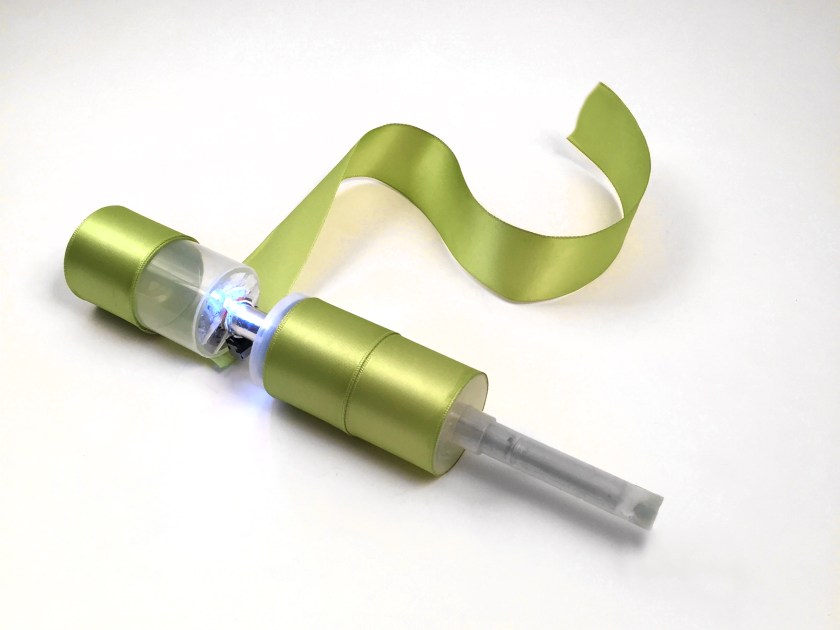#chrisrand
The Hydro-SMS is like a portable and personal sonar system. It is a transceiver that allows members of a group to pass correspondence through the water without electronic transmission or revealing their identity.
Here, an umbrella becomes the low-tech devise used to transmit and receive signals. Using an off-line phone in airplane mode, text messages are converted from the ones and zero’s of code to physical motions– in this case a solenoid striking a metal rod against a metal tip umbrella. The resulting percussive sound travels through the water as a modified version of Morse code. When an open umbrella is placed in the water to listen, the membrane and surface area senses and amplifies the sound like our inner ear. The phone again translates signal to code to text.
Looking back exactly a hundred years ago to 1916, the first widespread underwater sound detection system was developed and applied to the Anti-Submarine Division of the British Navy. It featured piezoelectric crystals to produce an active messaging system with ultrasonic frequencies and large listening sensors. Similarly, this project returns to the system of sending messages through the water but uses a personal and portable system called the Hydro-SMS Transceiver. As a Speculative Future project, imagine a time when our data flow, spoken conversations, physical interactions are closely monitored by AI and used against us without consent. Agents of opposition would rely on subversive devices that can be used off-line to secretly communicate. HAPPY CENTENNIAL !
VIDEO PROCESS: storyboard and gear


FABRICATION PROCESS : selected images from my Instructable post

Above- cutting apart the post.
Below- testing the percussive tap on the umbrella tip.


Above- hacking brass tube to make a mounting bracket for the solenoid.
Below- the final Arduino circuity.

FUTURE DEVELOPMENT :
I would continue working on the listening portion of the transceiver using piezo sensors mounted to the umbrella and write the Arduino code to ‘listen’ and translate the taps. The app and UI also needs to be built and able to function in airplane mode.
There have been major advancements in piezoelectric technology (PI CERAMIC company’s ultrasonic sensors, actuators, and sonar systems) that could replace the mechanical solenoid and it’s power hungry 12-24 volt requirements. This would allow for percussive signals used now to be broadcast extremely rapidly and over long distances possibly using the same power that supplies the Arduino board.
Overall, this was a NEW venture for me on so many fronts– a super exciting process and satisfying outcome !
Chris -•-• •••• •-• •• •••





















